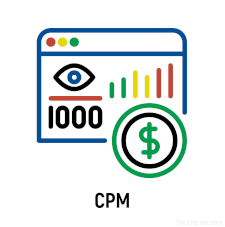CPM
Stands for "Cost Per Mille."
CPM, or "Cost Per Thousand Impressions," is a metric used in online advertising to define how much an advertiser pays for every 1,000 impressions of an ad. An impression is registered each time an ad is displayed, whether it's a banner ad, video, or other form of digital promotion.
CPM is one of several key pricing models in digital advertising. Unlike models such as Cost Per Click (CPC) or Cost Per Lead (CPL) — where advertisers pay for user interactions (clicks or conversions) — CPM focuses on exposure. This makes it particularly useful for brand awareness campaigns, which aim to reach as many people as possible rather than driving immediate user actions.
While CPM pricing is widely used in digital advertising, many advertisers also track metrics like Click-Through Rate (CTR) and conversion rate to assess the effectiveness of an ad beyond just impressions. Higher visibility (through CPM) can increase the likelihood of conversions, but it's easier to measure the return on ad spend (ROAS) using performance-based metrics like PPC or CPL.
NOTE: Mille is Latin for "one thousand," which is where the term "CPM" comes from. Technically, CPM should be (RPM) or Revenue Per Mille from the publisher's side, but advertisers and publishers often use CPM and RPM interchangeably. Some advertising platforms display revenue per thousand impressions as eCPM (effective CPM) instead of RPM.
 Test Your Knowledge
Test Your Knowledge